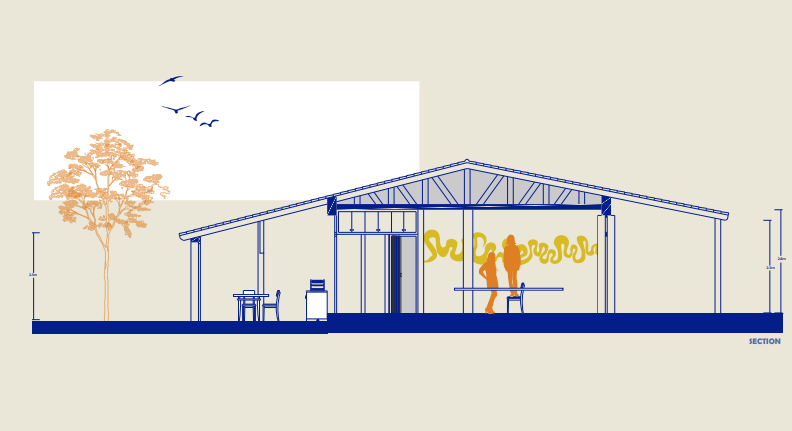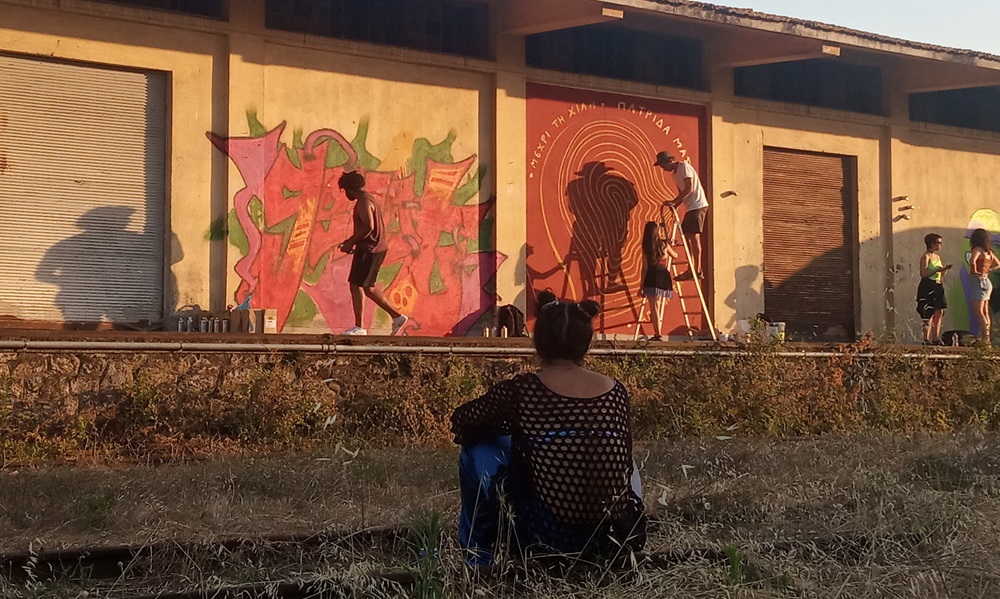When Eleni Tsompanidou and Eleni Voultsidou were growing up in the town of Dikaia in the most remote part of Northern Greece, in the nineties, the rural community was thriving. Since then thousands of people abandoned the greater region due to consequent crises. Dikaia is now a village of 200 (was 800 a couple of decades ago) with visible signs of a glorious past and even more invisible ones. “First it was the economic crisis, then migration and the refugee crisis that brought more military and police and eventually a fence in the borders. Covid and wildfires followed and now the energy crisis” Eleni describes the situation in the region of the Northern Evros river. “Farmers can no longer sustain their families and businesses, so they’re relocating to different parts of the country and in cities”. It sounds like a copycat story of internal migration that replicates itself in every different generation and era. But it’s so much more than that. A rich culture and traditions that span three countries, three languages and religions are gradually lost in the process.

To reverse that, Cotranspose, a group of young locals with an interdisciplinary background, return home to revitalize their dwindling community. They are running an innovative cultural experiment called Cotranspose, breathing new life into the fading culture and social life of the village. Their vision? To transform an abandoned building in the centre of the once thriving community, into an art residency and an evolving library of living stories - all collected and reimagined through the lens of villagers and visiting creatives from around the world.
“We enter unused spaces in the village, houses that people abandoned in excellent condition, public spaces like an amphitheatre, the closed train station, and old closed-down shops. We invite artists from all over the world, mainly from Europe, for a residency program to stay there. Together with the local community the residents, work on various projects - they create artworks, run workshops for the community, put on performances, and organize exhibitions. So it's this exchange between the local people and the international artists” says Eleni…
At the core of their project is the concept of "collective narratorship." Rather than a musty repository of static archives, Co-llection functions as an ever-expanding, boundary-pushing space of collaboration. International artists are invited to these residencies to interact with the locals - collecting oral histories, studying fading customs, and even recording sounds and tastes at risk of vanishing. Those immersive insights are then transformed through multi-media exhibitions, publications and hands-on workshops where everyone becomes an author reimagining their living heritage. Elders demonstrate ancient skills like brick-making while tech-savvy youth create digitized folk stories accessible via web and mobile apps.

“Just by coming to this distant place and immersing themselves in an environment that feels like travelling back in time, and going through the process of creating art in a completely different setting, is in itself a huge inspiration for the works they make” Eleni explains. “Artists are usually inspired by experiencing traditions or local communities that have been lost in most parts of Europe. What interests them is getting to know the place through those local traditions, stories, ways of life”. And the local population?
“For the local community, right from the first year - which we didn't expect - they were very enthusiastic. When the artists left, people asked us when they would come back, saying how great it was that the village came alive again. It was very emotionally powerful. Beautiful, both for the children who can experience it, and for the artists too”.
Underpinning it all is a lofty philosophy of restoring cultural identity and societal belonging through participatory storytelling. That's an urgent need in economically depressed Thrace, where population decline has decimated rural traditions. Co-llection aims to show how valuing the old and new alike can reinvigorate community bonds.
“We’re planning to enhance the physical part of the project with the ability to collect oral histories - and work around presenting them. So there will be a more multimedia part using all the tools that could make those stories more accessible through translation into different languages, using audio and video” says…

Cotranspose is now planning to repurpose the "Steki" - an abandoned former community centre reborn with flex spaces designed for archiving physical relics and contemporary artworks. An engaging model for collaborative heritage preservation, Co-llection embodies how reviving the past is crucial for planting seeds of the future.
“We’re not just recording old stories, but reactivating them. So the interaction generates new knowledge and allows reimagining them to properly translate the word into something current and relevant right now”. Isn’t that the meaning of heritage, after all?
--
This story is part of the Special Feature on the New Bauhaus Awards 2024.
Find out more at the New Bauhaus website:
Regaining a sense of belonging: “Co-llection” - a collective narratorship of trans-local (hi)stories 










